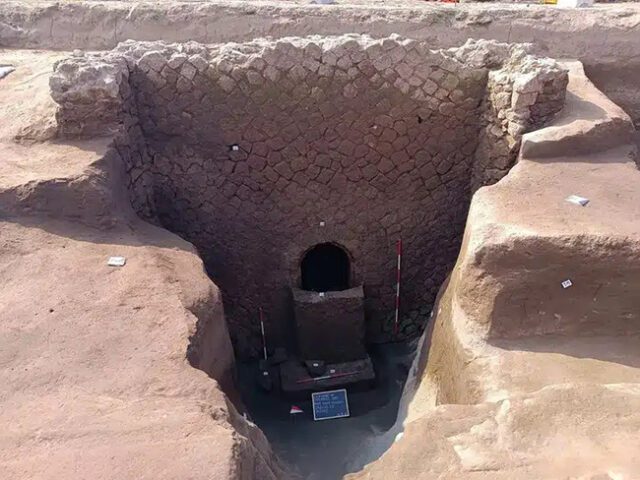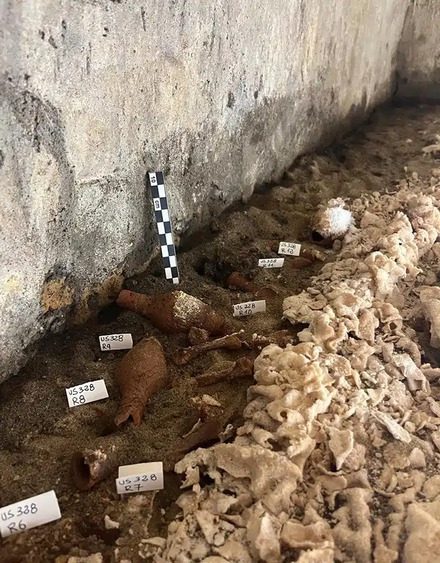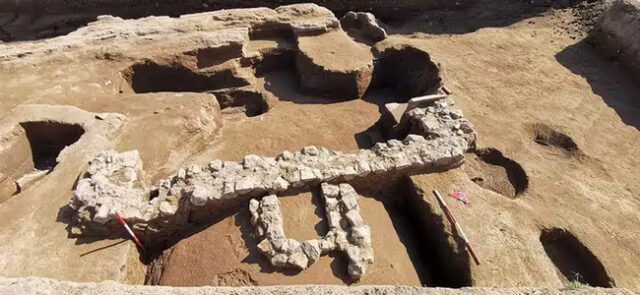
The recent opening of the 2,000-year-old “Tomb of Cerberus” in Naples, Italy, has unveiled fascinating insights into the lives and burial practices of an ancient Roman family. Discovered in 2023 near Giugliano, this well-preserved tomb is adorned with elaborate frescoes depicting Cerberus, the mythical three-headed dog, and ichthyocentaurs, suggesting the high status of those interred. The tomb’s lavish design, featuring three altars and funeral beds, indicates that it was meant for a wealthy family, who were buried with goods intended to accompany them in the afterlife. Among the most significant findings was a coffin that had remained sealed for two millennia, containing a skeleton wrapped in a mineralized shroud, surrounded by glass jars filled with perfume and toiletry ointments.

As archaeologists continue to study the artifacts from the Tomb of Cerberus, each discovery offers a new glimpse into the past. A strigil, a tool used for scraping the skin clean, underscores the importance of personal hygiene even in death. The analysis of glass jars has already revealed traces of ancient pollen, shedding light on the botanical environment and medicinal practices of the time. The meticulous examination of the tomb’s contents, from textile samples to genetic material, promises to enrich our understanding of Roman society, their beliefs about the afterlife, and the day-to-day lives of the individuals who once walked the streets of Naples. This extraordinary find not only deepens our connection to ancient history but also highlights the complexity and richness of the Roman world.



















